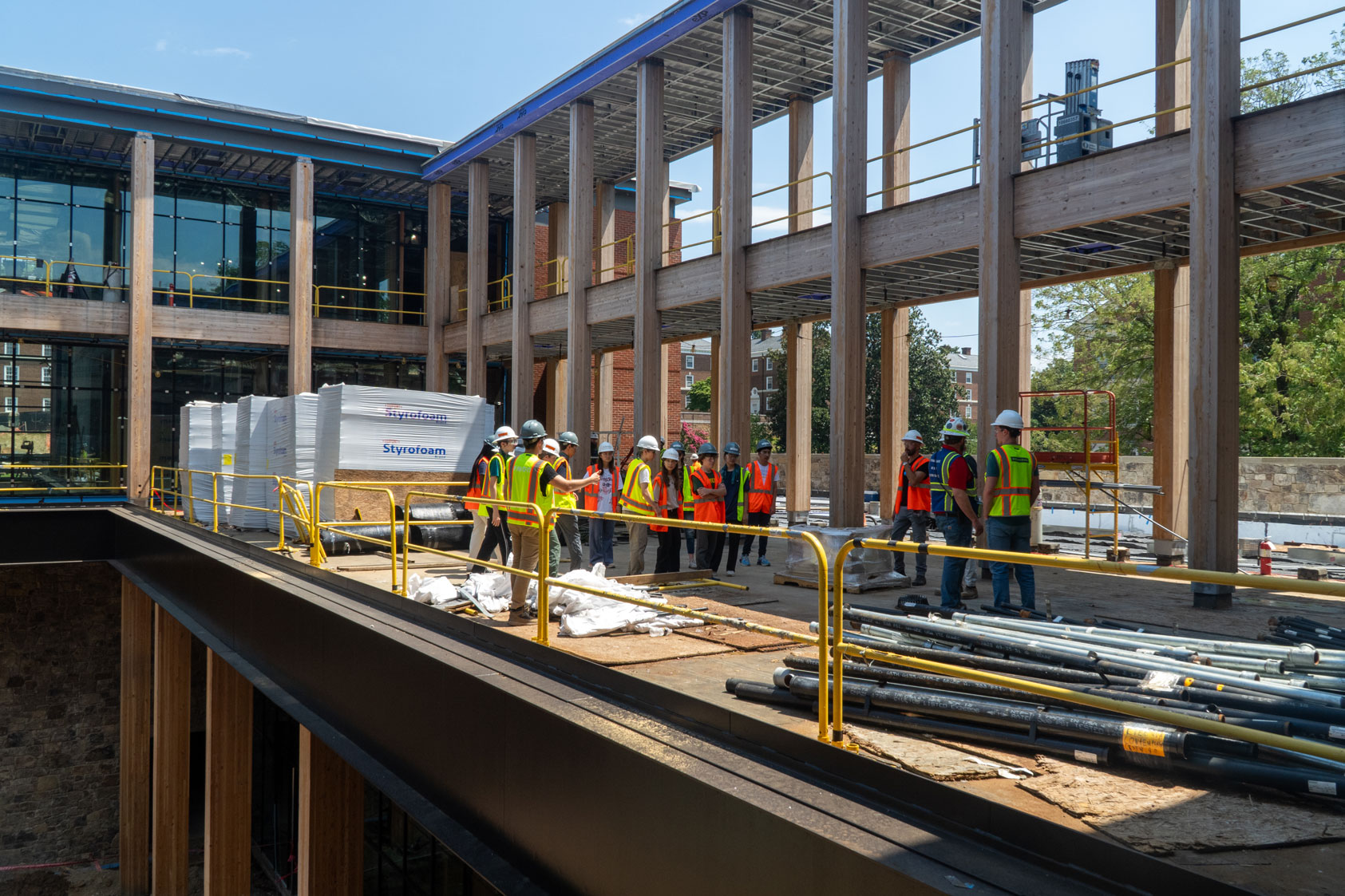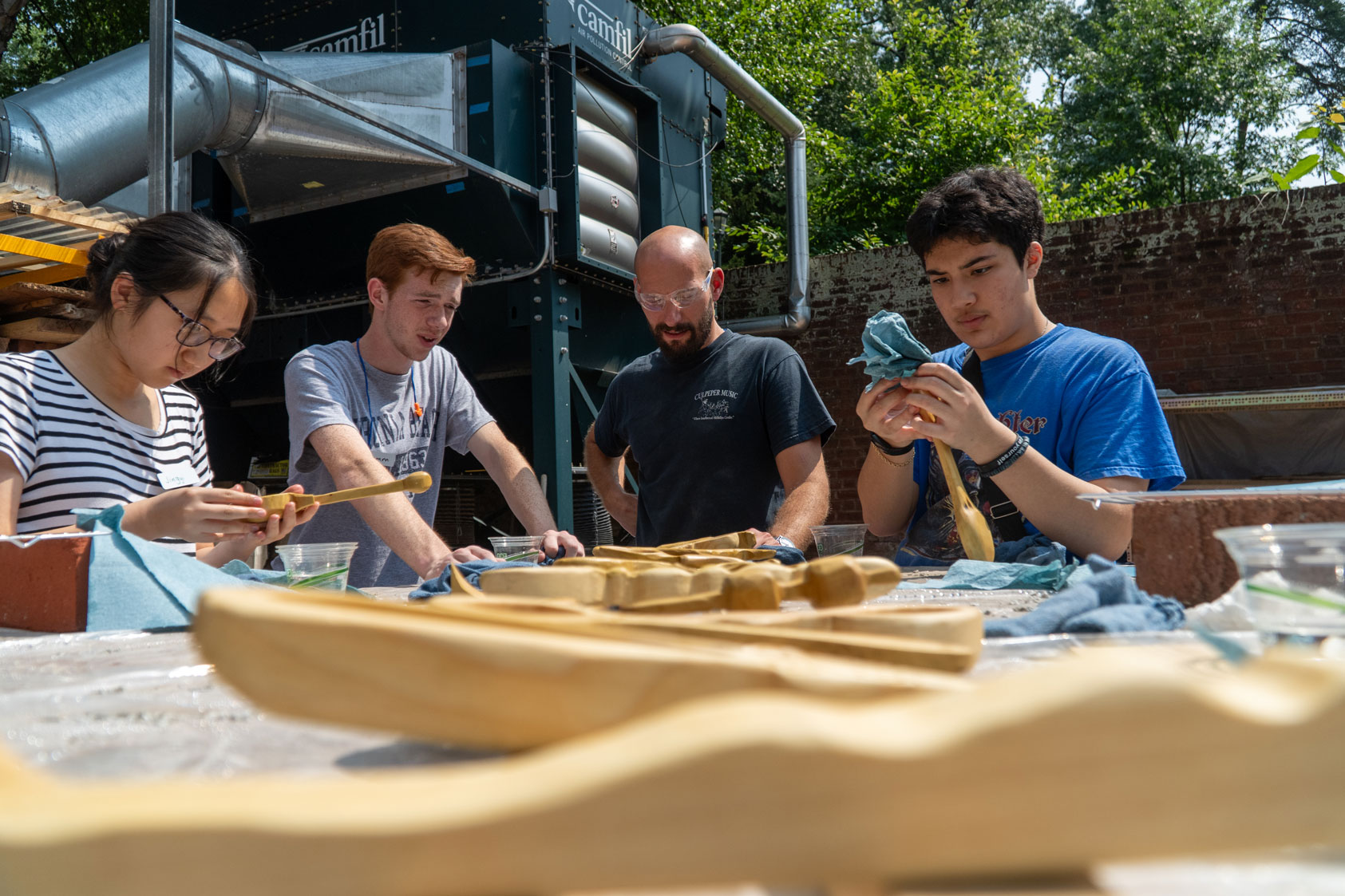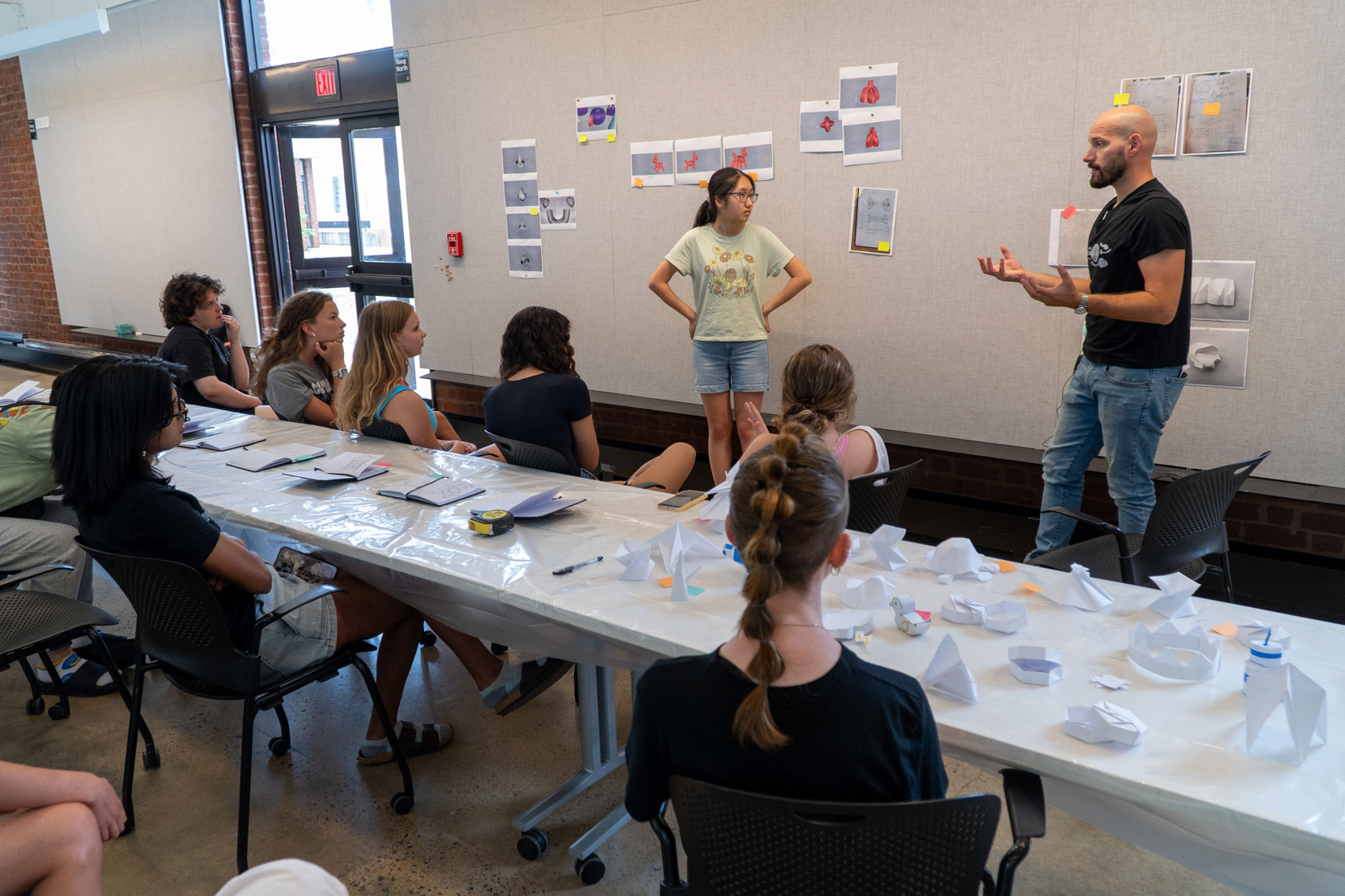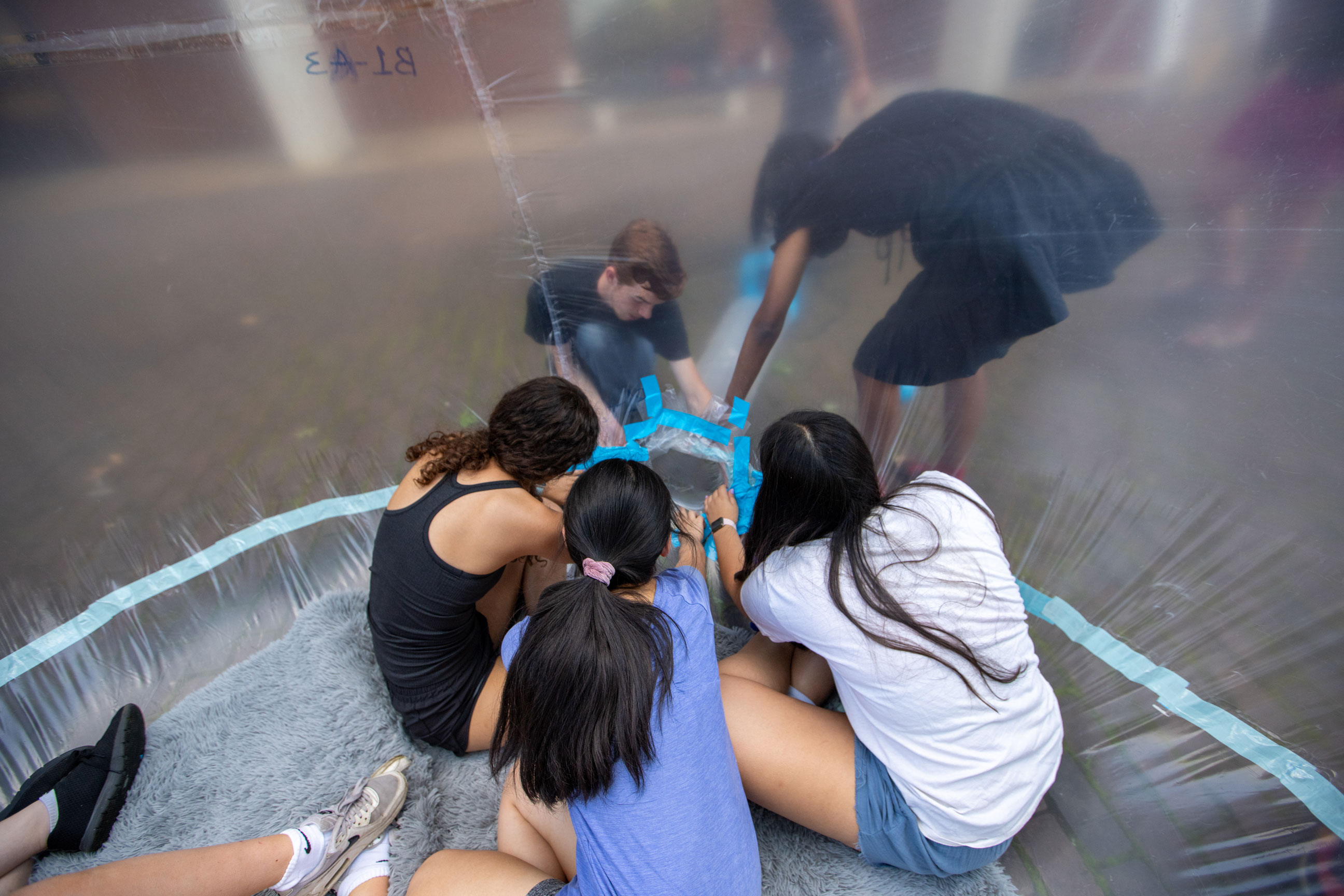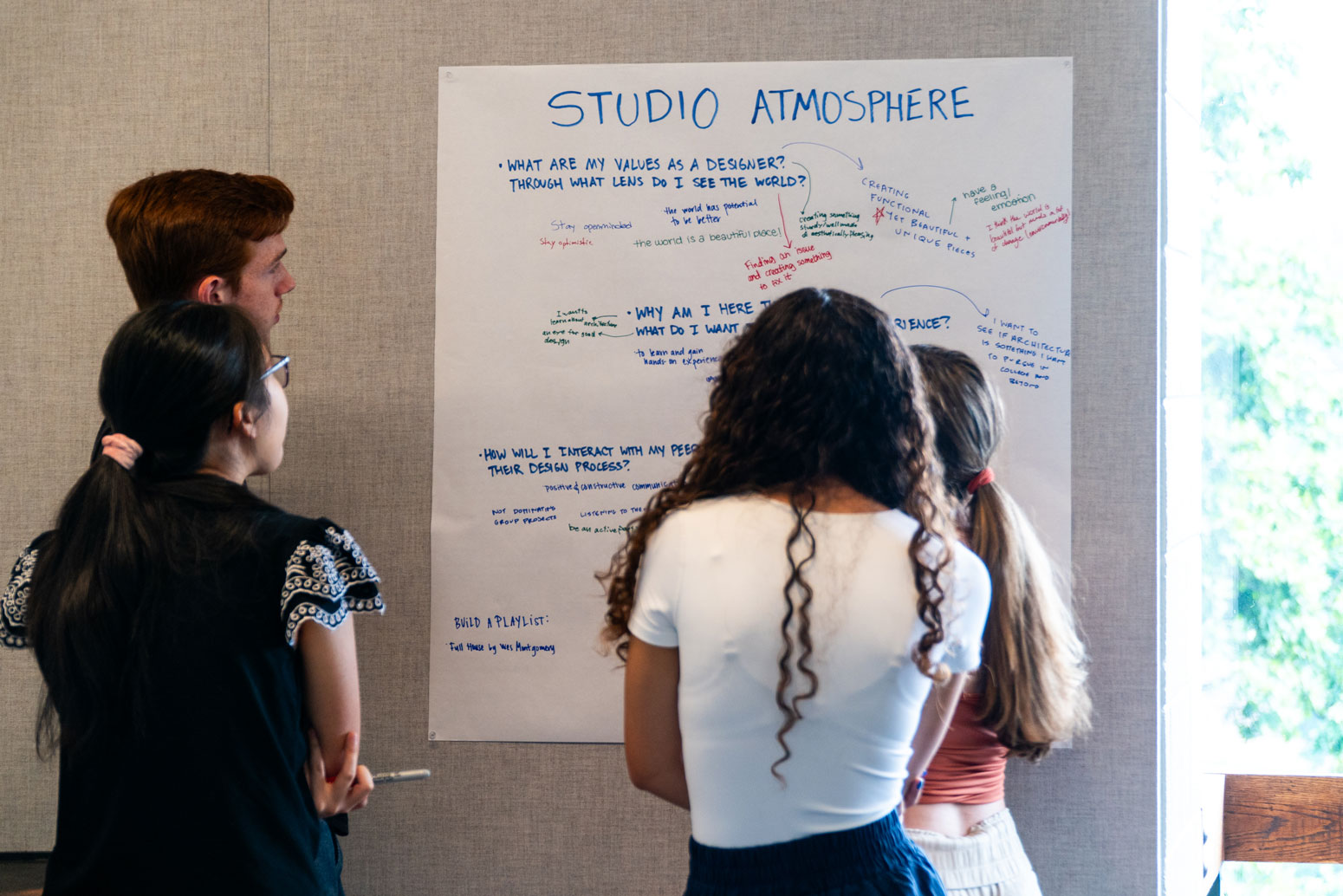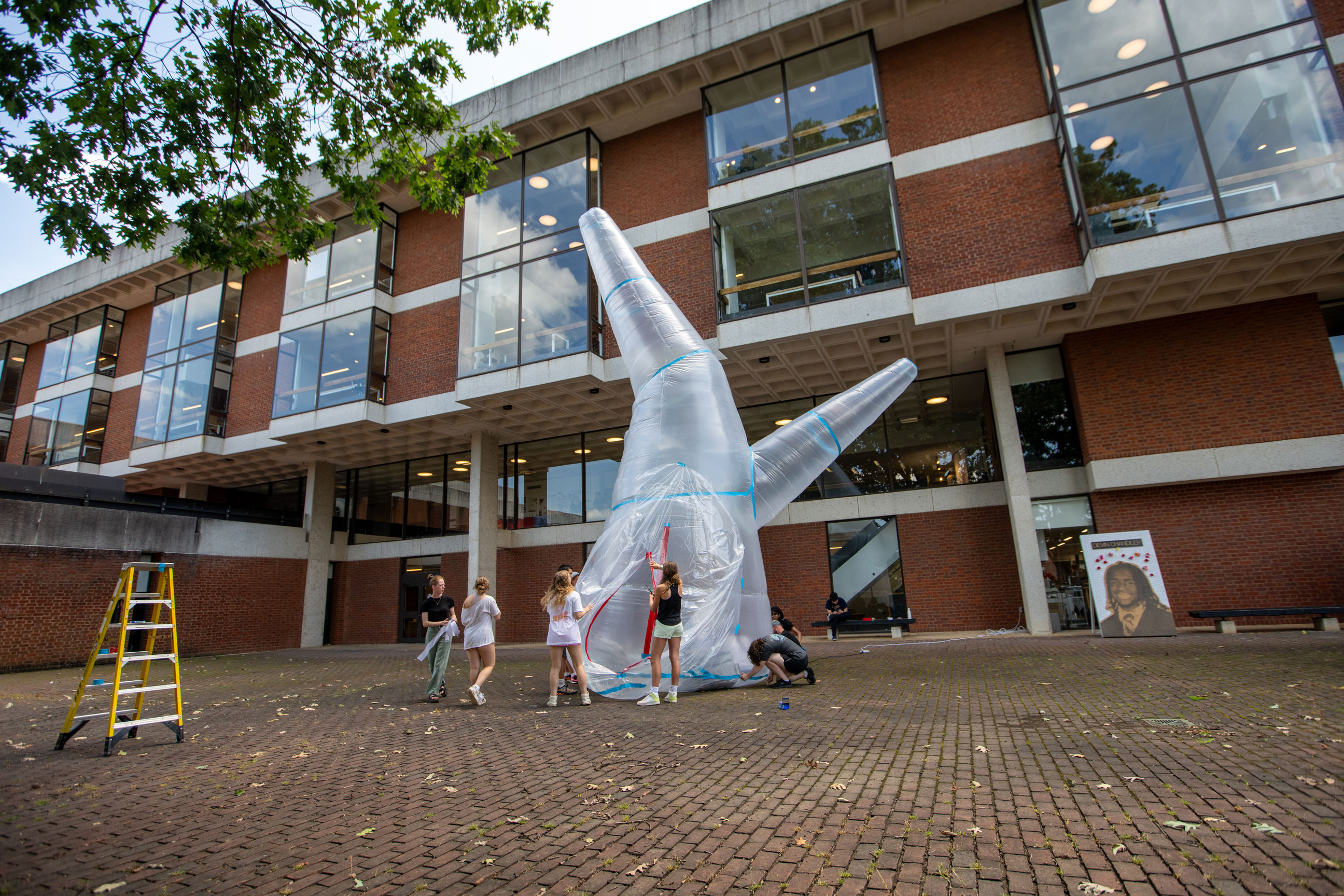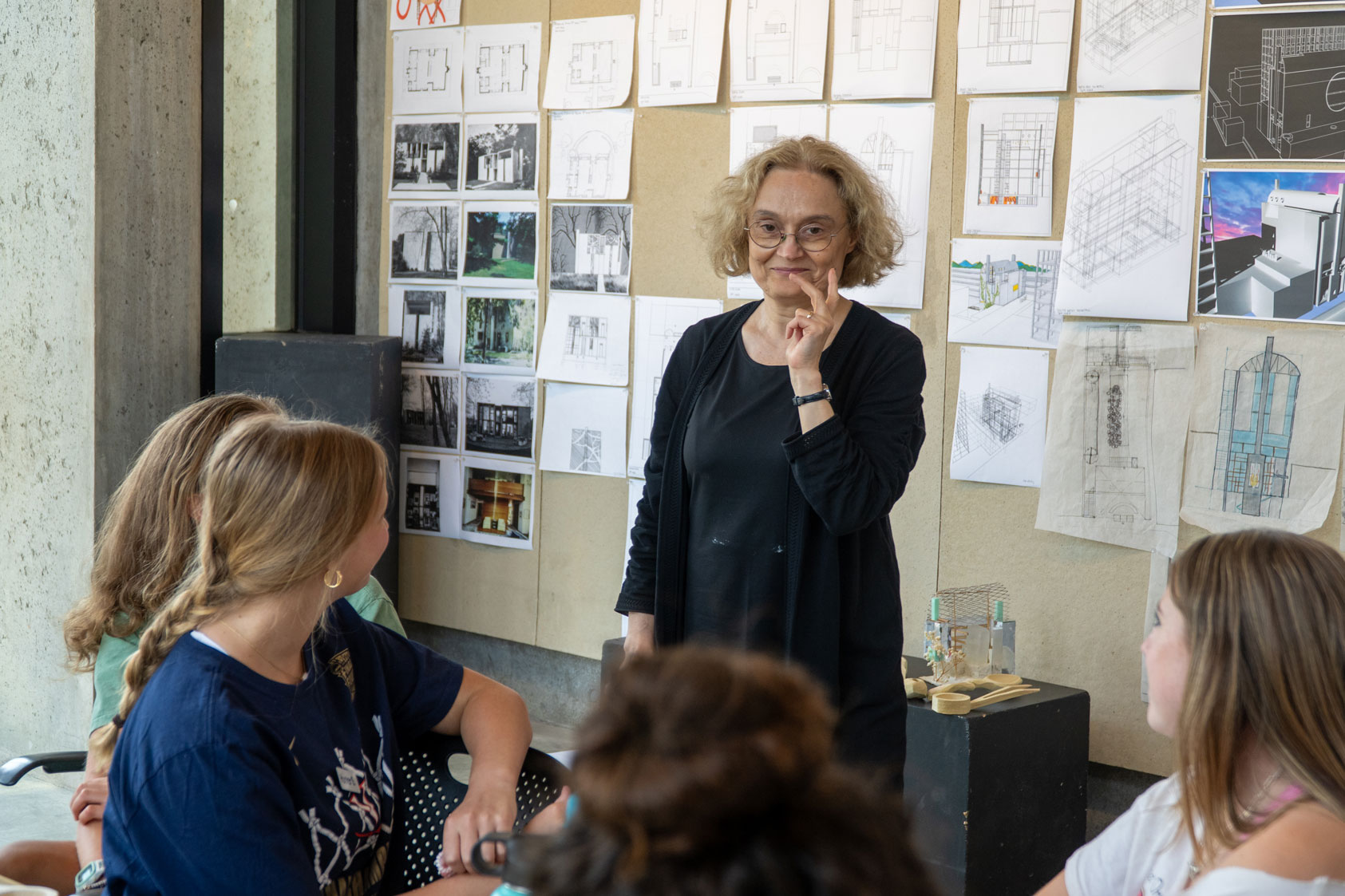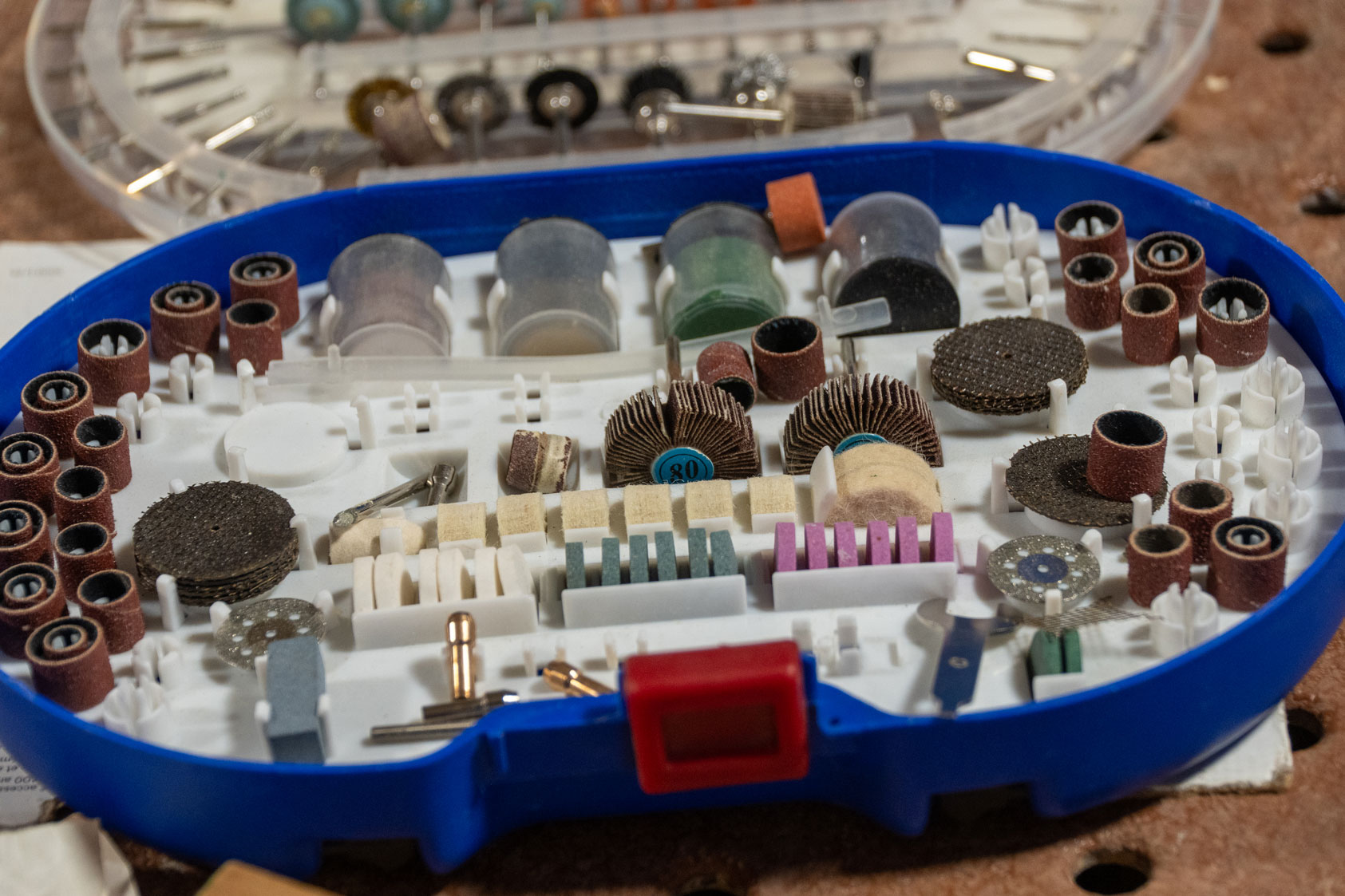UVA Design Discovery Program
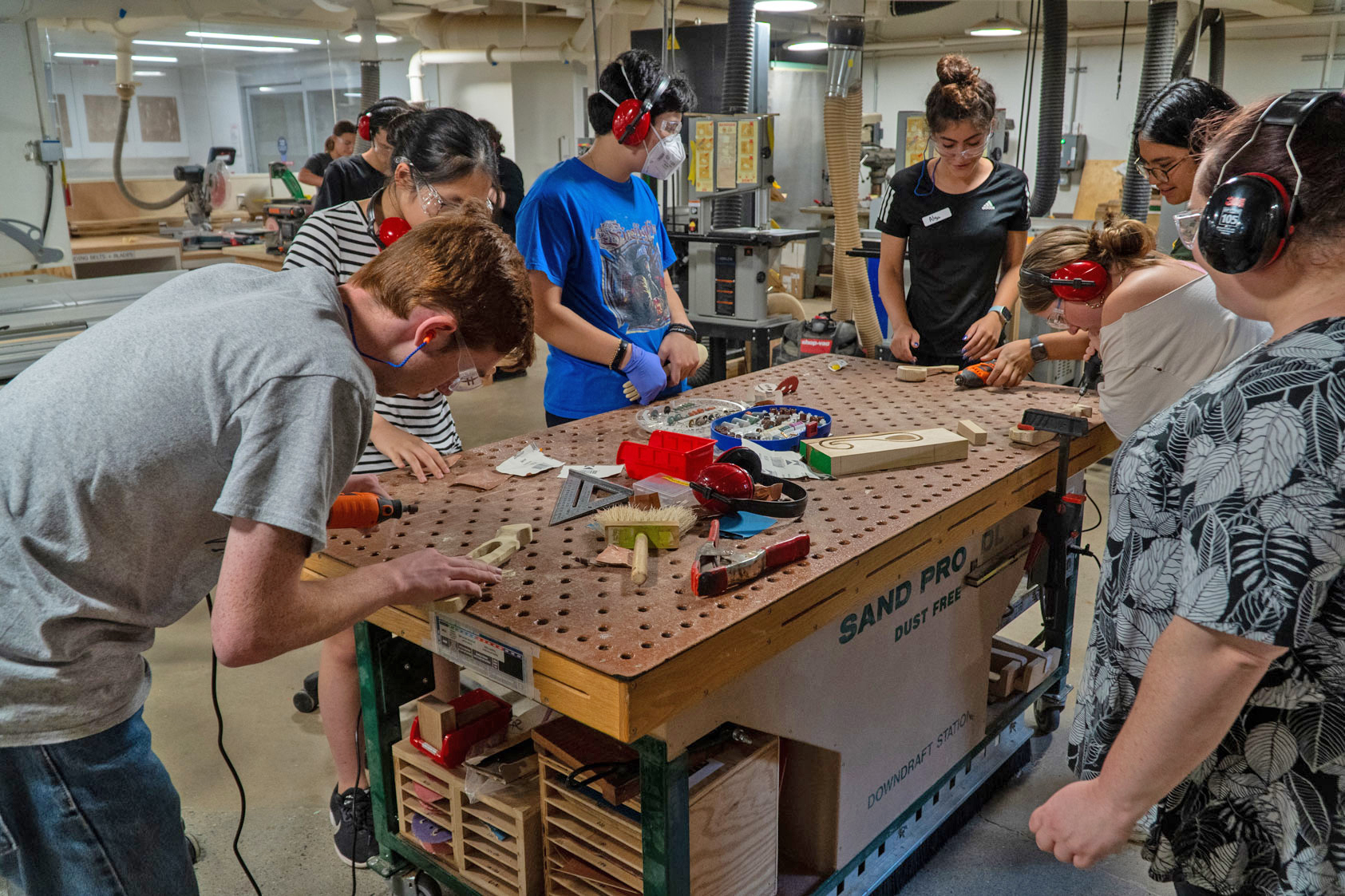
DEMYSTIFYING DESIGN
“We want to tear down the idea that design is exclusive by inviting students into a way of seeing, thinking, and working in the world.”
— Kyle Sturgeon, Assistant Dean, Director of Design Discovery
Whether or not we acknowledge it, design is an integral part of our daily lives.
From the cars we drive to the built spaces we occupy, design enhances or hinders our subconscious relationship with the world around us. The study of design and architecture have long been considered subjects for the elite, a hidden world accessible only to those who can afford it or come from a place of support for the long hours and rigorous curriculum needed to complete an architectural degree.
For many people, design and architecture are a mystery, but the UVA School of Architecture is trying to change that. To do this, Kyle Sturgeon (Arch ’05) created the UVA Design Discovery Program, a weeklong immersive summer design camp for high school youth. Through this program, Sturgeon wants to, as he puts it, “demystify design by tearing down that exclusivity and inviting youth into a way of seeing, thinking and working in the world.”
— Chloe Hellerman (Arch '23), Design Discovery Student Fellow
Inspired by similar programs offered at peer institutions like Columbia and Berkeley, Sturgeon envisioned this program to help students understand all aspects of architecture, including design. From designing a spoon, to creating an inflatable structure, construction site and firm visits, to lunching with industry experts, the students learn firsthand what it truly means to think, work, and problem-solve like a designer.
Sturgeon compares the design process to a scientific method, with iterations, critical thinking, and testing at its core. “There’s a process to design” he said. “We do it over and over, more informed each time -- and in this way we build a practice.”
For many student participants, this program was their first foray into the design process and considering the world of architecture as a career. For others like Cayden Boyer, a junior at Albemarle High School, this was a lifelong dream becoming reality.
“As a kid, I was always building houses out of cardboard for my toys,” he said, “but this program has given me a whole new level of love for design and how to better myself through working with others.”
Sturgeon hopes students not only learn practical skills such as using power tools, but build up their confidence by working together with the understanding that they can create, problem-solve, and learn by making.
“When students learn to analyze, collaborate, and convey ideas in a studio environment, it builds their capacity to make positive impact as both a citizen and a scholar in the real world,” he said. “For a young person imagining their life ahead of them, design education is a fantastic core that unlocks so many pathways.”
A WINNING TEAM
The ambitious six-day program was offered over the course of two weeks, with new cohorts coming in each week. With two workshops, site visits, and an overall action-packed schedule, Sturgeon noted that the ease of flow, depth of curriculum, and comprehensive management was only possible with help from student fellows. Consisting of current A-School students and recent graduates, fellows were responsible for helping guide the creative process and shaping the curriculum in a way that would work for high school students
For many of the fellows, such as Chloe Hellerman (Arch '23), this was a glimpse into academia and as much of a learning experience for them as for the student participants. “Being a student here during Covid, I did not get to do a lot of fabrication, so part of it was an opportunity to learn more about fabrication,” she said. “It gave me more confidence to identify proper use and guide their weekly experience.”
— Kyle Sturgeon (Arch ’05), Assistant Dean, Director of Design Discovery
NEXT STEPS: AN INCLUSIVE PLACE FOR ALL
Currently structured as a tiered tuition-based model, the program’s future goals are focused on boosting accessibility and ensuring quality. One goal is to build this into a residential program so students can fully immerse themselves in the process and world of design. With applications coming in from as far as St. Louis and Santa Barbara, Sturgeon believes creating a residential model will only enhance the student experience and elevate the program to a national level.
A second goal is to combat barriers to access by providing scholarships for interested students, regardless of family income. By continuing the tiered tuition model and through philanthropic support to further reduce the cost, Sturgeon hopes to increase accessibility and diversity for the students.
Sturgeon believes design and design thinking are vital to solving the world’s collective problems. Therefore, diversity of voice and accessibility to programs like this are essential and must be part of how we live and operate as citizens.
“If you’re willing to go with me that design is a superpower, then it becomes hugely important who wields that power,” he said. “In a sense, we need to have all voices contribute to how we reimagine our built environment or solve climate issues. It’s essential and very democratic.”
Not only would investment in this program serve students who need the support, it will ultimately serve UVA and the Charlottesville community.
Hellerman believes this is a mutually beneficial relationship for all parties involved. "The more students we can get involved in this program the more assets we will have available to improve the community," she said. "Not only do the students get a life-changing experience, but this program then becomes a driver for what they want to do with their career. So, inspiring them to get involved and use their differences and viewpoints as a design tool will be valuable on a broader scale.“
Our world is built upon many shoulders, and without bringing those shared voices, thoughts, and ideas to the table, our built environment suffers, problems go unsolved, and beauty goes unimagined. As a public institution, it is the University’s duty to be both great and good, and it can be that by being a good neighbor—both regionally and nationally—sharing knowledge, and creating opportunities where once was mystery.
